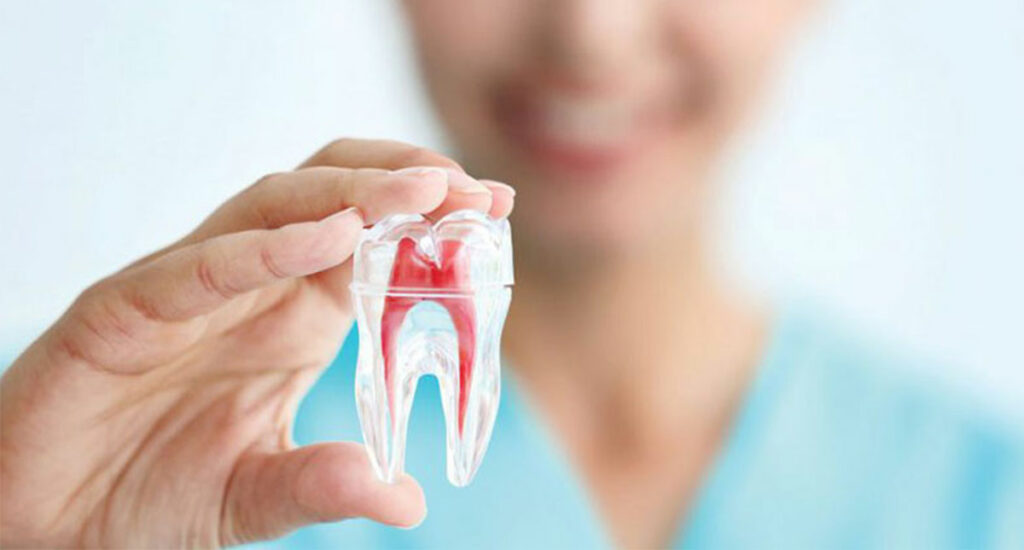
Losing teeth can be caused by a variety of things including teeth extractions, accidents and severe teeth decay. Teeth loss can affects chewing ability and confidence therefore, “dental implants” are the alternative treatment that solves problems due to teeth loss and brings back the mastication.
What are dental implants?
Dental implants are artificial tooth roots inserted into the jaw to replace missing teeth which made from titanium. The implants are compatible with the human body. They are inserted into the jawbone before placing a dental crown or a dental bridge. The dental restoration can be permeant or removable. The restoration allows the dental implants to work better. The purpose of dental implants is to replace lost teeth. Dental implants are use in order to hold a dental crown or a permanent dental bridge in place. They can also stabilize removable dentures to prevent them from getting loose and falling off.
Benefits of dental implants
- Similar to natural teeth
- Boosting confidence and increasing the quality of life
- Able to chew food efficiently
- Replacing extracted teeth without affecting nearby teeth
- The longevity is longer than other types of artificial teeth
Who are suitable for dental implants?
Dental implants recommend for those who have lost their natural teeth and older than 18 years old because inthese age jawbone has already grown completely. Those who will have a dental implant inserted should be healthy as local anesthesia is required for the procedure. People younger than 18 years old, pregnant women, and patients with a certain chronic disease should not receive a dental implant.
Duration of dental implant treatment
The dental implant procedure takes around 3–6 months, depending on the oral health and amount of jawbone. The number of teeth that need a dental implant may also be taken into consideration.
CAD/CAM technology can helps shorten dental implant design period
Nowadays, the Dental Digital CAD/CAM technology is available to shorten the dental implant design period to within one day. A computer software and oral scanning are used in place of the traditional dental printing. The procedure starts from conducting a 3D X-ray, and taking photos and scanning of teeth. After that, dental implants are designed and made with a program before being inserted inside the patient’s mouth for treatment. This process takes only 2-3 hours.
Steps of inserting dental implants
1. Dental radiograph and dental examination to make treatment plan
In this first step, a dentist will do a dental examination of the patient’s mouth with an dental radiograph to make a proper treatment plan. This will allow the dentist to design dental implants effectively. The dentist will look at the nearby teeth, the locations of the nerves, the bone mass and strength, the location of the jawbone and overall dental health.
This step is very important as it needs the expertise of a dentist and precise technologies to increase the treatment efficiency.
2.Eliminatethe dental problem prior the dental implant insertion
Dental implants cannot be inserted if the patient has oral problems, such as gum disease. In such case, the patient must schedule a treatment to eliminate those problem before inserting a dental implant.
If the jawbone is found to have deteriorated or the paranasal sinuses are found to be near the implant area the dentist may consider increasing the bone density. In case the bone is not strong enough, bone grafting may be considered before the dental implant placement.
3. Surgical procedure to insert dental implants
After getting the oral cavity ready for the dental implants, the dentist will perform surgery to insert dental implants. The dentist will start the procedure by cutting the gums open and drilling a hole into the bone, inserting an implant and suture the wound.
After the surgery, it is the time for recovery to let the implants attach to the jawbone. This is when the body is trying to adjust to the implants to build the base of the teeth that is similar to the real teeth. During this time, the dentist may schedule a follow-up before inserting artificial teeth in the next step.
4. Inserting dental crowns or artificial teeth
When the dental implants have already attached to the jawbone and the gums, dental crowns or artificial teeth will be inserted. The artificial teeth will be similar to the lost teeth in both size and shape to make it suitable for the space inside the mouth allowing the patient to chew food naturally.
5. Follow-up and postoperative care
Although the treatment has already been completed, the dentist will schedule a follow-up appointment to see how effective the dental implants are or if there are any problems from the implants. If everything is normal the dentist will prolong the interval between follow-ups and recommend usual oral care.
Possible symptoms after inserting dental implants
- Dental implant inflammation due to consuming spicy food, chewing hard food, drinking alcohol and smoking.
- Dental implants start to hurt or ache for 5-9 days. After this period, if the pain persists like the first day, or if there is nonstop bleeding, the patient should see a dentist right away.
- In case of swelling, cold compression is recommended . If the swelling does not get better the patient should see a dentist immediately.
- If the area is infected , presence with pus and exudate and dental implants are loose the patient should immediately notify the dentist.
What can happen after dental implant insertion, and what should be done to deal with them?
- After dental implants are inserted there may be pain, swelling and inflammation similar to tooth extractions or surgical removal of wisdom tooth. It is suggested to take care oral health follow the dentist’s recommendations strictly.
- In the first week, it is best to take antibiotics as prescibed by the dentist.
- Consume light food and avoid food with strong flavors or hot food.
- Avoid smoking and alcohol consumption after the treatment has been completed.
- Oral care routine can be done normally but should avoid the wound area. Gargling with salt water after every meal helps reduce the chance of food particles getting stuck in the wound area and get infection.
If there are any concerning symptoms always contact the dental department or see a dentist immediately.
For dental implants, it is best to choose a trustworthy and experienced dentist for a successful dental implant treatment and effective use of dental implants.Regularly oral check-up every six months and oral care routine should be done after the dental implants treatment to make sure that the oral health has been well-maintained.




Chat with us